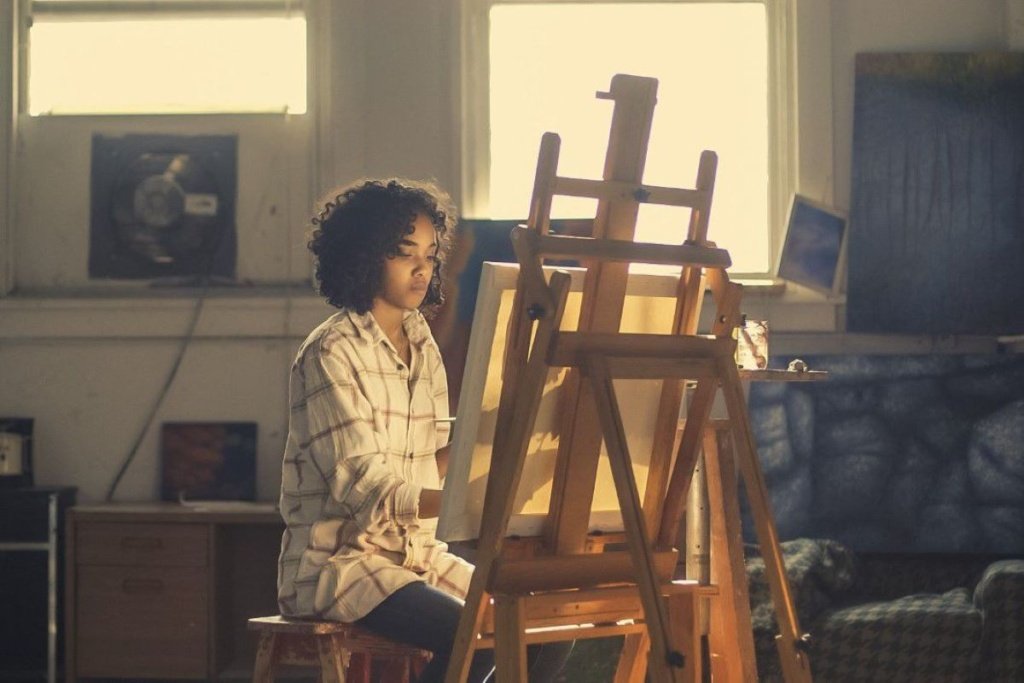Three times more visual artists report attending a fee-paying school than the proportion of the general population who receive a private education, a report commissioned by University of the Arts London (UAL) has found.
Of the 658 artists surveyed between April 2024 and March 2025, 18% said they had been to an independent school — something just 7% of wider Britain can say.
Meanwhile, 39% said they had had a parent employed in a traditional or modern professional role, representing the most advantaged social class, at the age of 14.
“Sadly, the type of school you go to matters when it comes to access to the arts,” the Who Gets to Be an Artist report finds, “almost as much as to gaining a peerage or becoming a corporate lawyer.”
Released in partnership with Artquest on 21 October, the findings paint a picture of a sector still struggling with barriers to entry.
But even for those who do make it as a visual artist, the reality of a life within the creative industries is mired by financial insecurity — with nearly a third of all respondents saying they had taken on more debt in the last year just to continue in their chosen career.
Nigel Ball, director of UAL’s Social Purpose Lab, said: “UAL has produced some of the world’s most successful artists, but the reality for our current students is that this generation face a very different reality to make a living in the arts.”
Creative practice alone unable to support artists’ income
Just 41% of respondents told researchers they regularly earned money from their artistic output, with 68% saying a lack of creative income was holding back their careers.
The need for many to supplement their earnings with jobs in related or external fields is also a contributing factor to stress and burnout, with over a third of the report’s sample, 38%, revealing they had accessed mental health support in the last year.
Meanwhile, the rising cost-of-living is also taking effect, with 58% of respondents admitting they had recently had to dip into savings to support themselves — and 15% saying they had no savings on which to rely.
And for a group of people who make their money from visual arts, and are therefore reliant on material resources, the survey also told a concerning story about how the cost-of-living crisis has impacted budgets for creativity and making.
A sizeable 22% reported reducing their materials in the last year, with 16% making use of cheaper alternatives.
Time drains and struggles with accessing grants
In terms of the biggest barriers impacting visual artists’ careers in the last year, a lack of income earned from creative work was the most commonly cited obstacle.
Nearly as popular was the struggle to promote work within the art world, followed by a lack of time for work thanks to having to juggle other jobs, and difficulty accessing grants, finance and funding.
“What emerges is a troubling picture where access to a stable artistic career is closely tied to privilege. Even getting into the arts to begin with is significantly easier if you have attended a fee-paying school and hold a degree,” the report concludes.
“Once there, those with independent wealth or access to financial support from family and friends, if needed, are far better placed to withstand economic shocks and to sustain their artistic endeavours over time. For others, precarity and exclusion are all too common – and when the chips are down, their artistic practice is the first thing to go.”
Government must address ‘precarity’ of artistic life
The report concludes with a series of recommendations directed at central government.
Researchers call on policymakers to expand access to creative education at all levels, ensuring people from “all different backgrounds can gain the skills for a career in the arts”.
They also ask for greater protections for self-employed artists and creative freelancers more broadly, to “address the precarity and turbulence” faced by too many.
Ball said: “We’re calling for more concerted action between government, employers and the education sector to secure the creative industries talent pipeline and realise the ambitions in the Creative Industries Sector Plan.”
The UAL official added: “Part of our duty as a university is to shape a future where our graduates are paid fairly for their work and we can train them for that work in good faith.”
Patrick Fox, the chief executive of community arts organisation Heart of Glass, told Arts Professional the findings were “disappointing but sadly not surprising”.
“Artists are really struggling right now and that creates even bigger barriers for future representation,” he said.
“Without proper representation, we end up with a cultural sector that only tells part of our story, and miss out on critical working-class voices at a time when they are really needed. Financial barriers, the erosion of arts education and the wider societal pressures all are all contributing to this, especially in under-resourced communities like St Helens and Knowsley, where we work.”
Fox added: “This is an urgent situation that needs real, joined-up solutions. If we don’t act now it will impact us for generations to come.”

